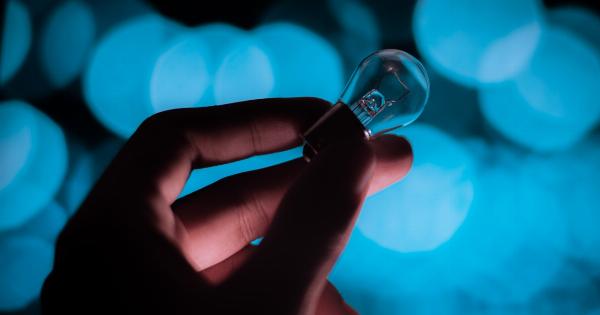Sleeping with contact lenses is a common mistake that many people make, thinking it will save them time and hassle in the morning. However, this practice can have serious consequences for your eye health.
While contact lenses offer great vision correction during the day, they are not designed to be worn continuously, especially during sleep. In this article, we will explore the potential risks associated with sleeping in contact lenses and why it is important to remove them before bedtime.
1. Reduced Oxygen Supply
When contact lenses are worn during sleep, they can restrict the amount of oxygen that reaches the eyes. This is because the lenses create a barrier between the cornea, which needs oxygen to function properly, and the surrounding air.
As a result, the cornea may not receive enough oxygen to stay healthy, leading to discomfort, redness, and increased risk of infection.
2. Increased Risk of Eye Infections
Sleeping with contact lenses significantly increases the risk of eye infections. This is mainly due to the reduced oxygen supply mentioned earlier, which can create an ideal environment for bacteria and other microorganisms to thrive.
Additionally, any dirt or debris that may have accumulated on the lenses throughout the day can cause irritation and introduce bacteria into the eyes, further increasing the chances of developing an infection.
3. Corneal Ulcers
Corneal ulcers are open sores that develop on the cornea, and they can be a serious complication of sleeping with contact lenses. The lack of oxygen, combined with the potential for bacterial growth, can lead to the formation of these ulcers.
Corneal ulcers can cause severe pain, redness, sensitivity to light, and vision problems. If left untreated, they can even result in vision loss.
4. Dry Eyes
Wearing contact lenses for an extended period, including during sleep, can cause dry eyes. This occurs when the lenses absorb the moisture from the eyes, leading to discomfort, itchiness, and a gritty sensation.
Sleeping with contact lenses exacerbates this issue as it reduces oxygen and tear exchange, further drying out the eyes. Continuous dryness can damage the cornea and increase the risk of infection.
5. Discomfort and Irritation
Sleeping with contact lenses can cause discomfort and irritation. Overnight wear can lead to the accumulation of protein deposits on the lenses, making them stiff and less comfortable to wear.
These deposits can also cause blurry vision and make it difficult to remove the lenses in the morning. Additionally, lenses that are not designed for extended wear may scratch the cornea during the night, resulting in pain and irritation.
6. Increased Risk of Allergic Reactions
Some people may be sensitive or allergic to the materials used in contact lenses. Sleeping with these lenses can increase the risk of developing allergic reactions, including redness, itching, and swelling of the eyes.
Continuous exposure to the allergens in the lenses can worsen the symptoms and even lead to severe allergic conjunctivitis.
7. Impact on Contact Lens Lifespan
Wearing contact lenses while sleeping can significantly impact their lifespan. Extended wear can cause protein and mineral deposits to build up on the lenses, making them more prone to tearing and damage.
This not only reduces the effectiveness of the lenses but also increases the risk of infection and discomfort.
8. Difficulties in Lens Removal
Removing contact lenses after sleeping in them can be challenging, especially if they have dried out or adhered to the cornea. Attempting to forcefully remove the lenses can scratch the cornea or damage the delicate surface of the eye.
This can be avoided by following the recommended wearing schedule and removing the lenses before bedtime.
9. Increased Cost and Replacement Frequency
Sleeping with contact lenses can result in more frequent lens replacements, leading to increased costs. Continuous wear causes lenses to deteriorate faster, requiring more frequent replacements.
Additionally, the risk of infections and other complications may necessitate visits to an eye care professional, further adding to the overall expense of maintaining eye health.
10. Negatively Affects Eye Health and Vision
Sleeping with contact lenses can have long-term negative effects on eye health and vision.
The combination of reduced oxygen supply, increased risk of infection, dryness, corneal ulcers, and other complications can lead to permanent damage, including scarring of the cornea or even vision loss. To preserve eye health and maintain clear vision, it is crucial to remove contact lenses before sleeping.





























